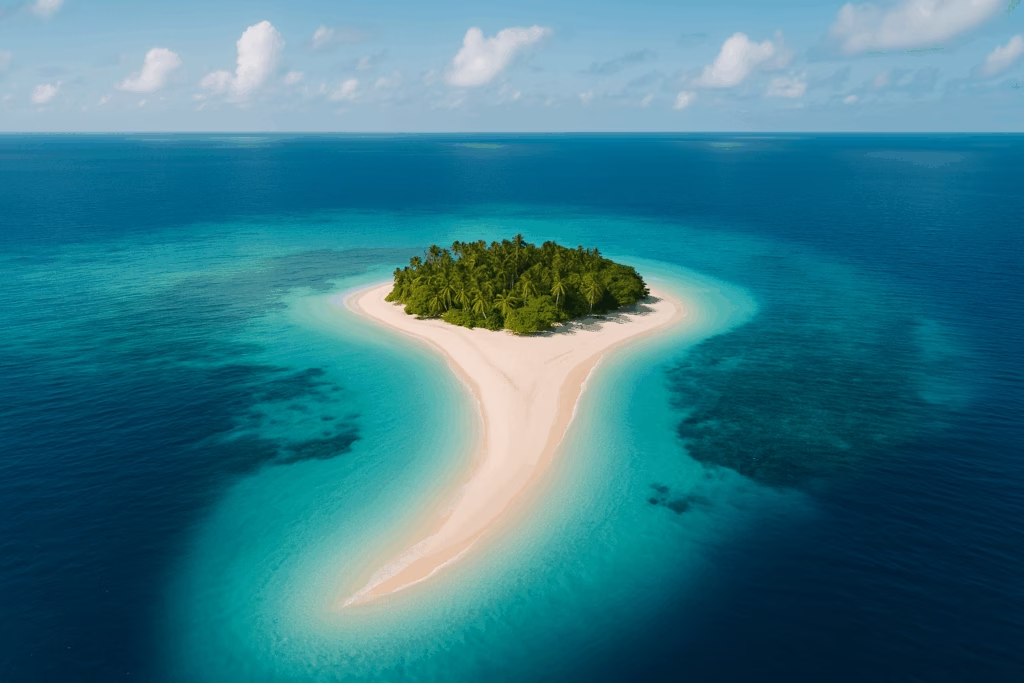
With the rise of Instagram and the inspiration it brings, more people are flocking to popular travel destinations, eager to discover new places. Boracay and Palawan, they say, are so yesterday. These two dominate the stage like overachievers at a family reunion. But here’s the reality: The Philippines is an archipelago of more than 7,000 islands, and not all of them are overrun by influencers recording their slow-motion hair flips. Others continue to be the most sublimely under-the-radar, mind-blowing bottles around quietly. These are the secret spots that you whisper about, the places that you almost don’t want to tell anyone else about. Almost.
Let’s dive into the Philippines’ best-kept secrets—before everyone else finds out.
Camiguin – An Island That Collects Volcanoes Like Souvenirs
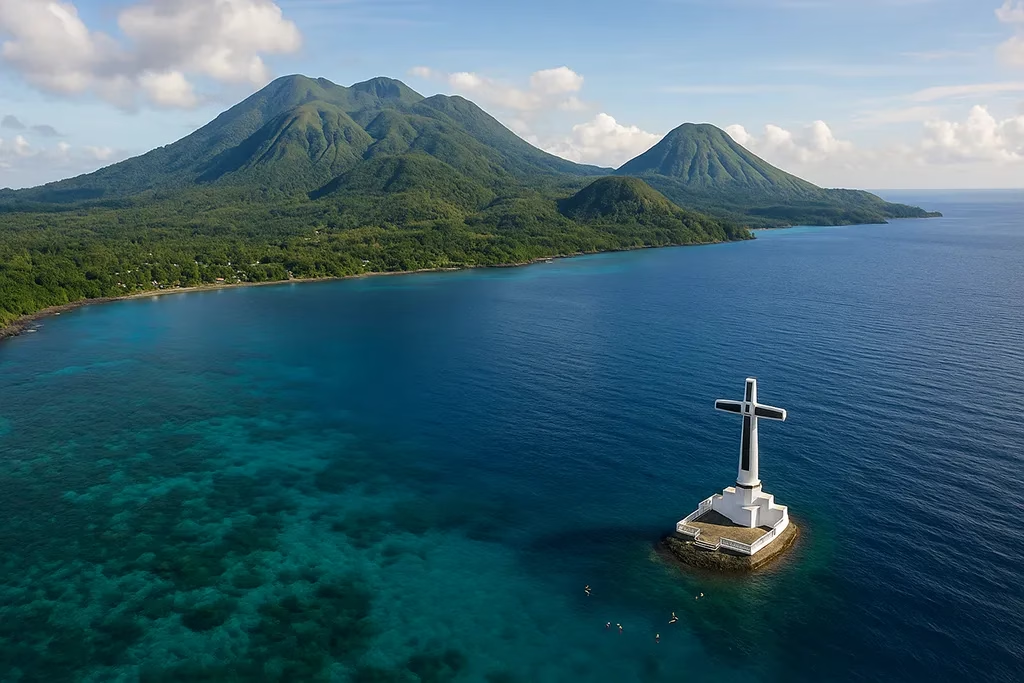
Camiguin is that reserved cousin who never sang in school programs, then one day comes to a singing contest and casually reveals they’ve also completed six marathons. Somehow, this 23-kilometer-long island manages to squeeze in seven volcanoes, hot springs, waterfalls, and a sunken cemetery. Yes, a real sea cemetery.
Why Go:
- Hike up Mount Hibok-Hibok if you want bragging rights (and a little bit of soreness in your calves).
- Then snorkel over the Sunken Cemetery for an eerie and Instagrammable dive.
- And later, soak in Ardent Hot Springs pretending you’re sporty.
More to Love: Just as quirky as the landscape is the food scene here. From the sweet lanzones fruit (Camiguin has a festival dedicated to it) to fresh seafood grilled right on the beach, your taste buds will work just as hard as your hiking boots.
Pro Tip: Pack swimwear and hiking shoes — you’ll wear them on the same day.
Dumaguete – We All Love the Flirty City
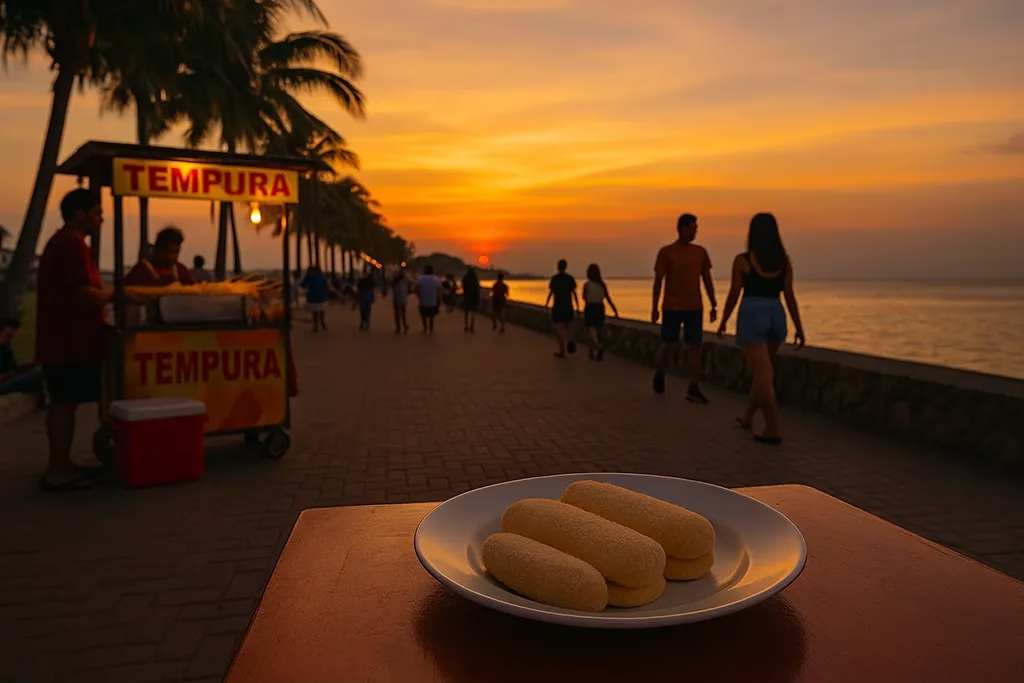
If cities had Tinder profiles, Dumaguete’s would say: “Sunsets, coffee by the sea, and I’ll never ghost you.” Dumaguete, also called the “City of Gentle People,” attracts students, retirees, and divers, as well as anyone with a sweet tooth. (Hello, Silvana — buttercream-filled cookies rolled in crushed cashews.)
Why Go:
- Nearby Apo Island is a turtle haven.
- Rizal Boulevard is perfect for a golden hour stroll and enjoying some impromptu street food tempura.
- Silliman University feels like Hogwarts, but with more coconuts.
More to Love: Dumaguete is a launchpad for adventures, too. A quick drive will lead you to waterfalls such as Casaroro or the Twin Lakes — Balinsasayao and Danao, which are so out of reality they’re like a dream. It is, essentially, the city that’s like, “Sure, we’ll give you cake… but also a volcano if you’re in the mood.”
Pro Tip: Order extra silvanas. You’ll thank me later.
Leyte – The Sandbar Beyoncé
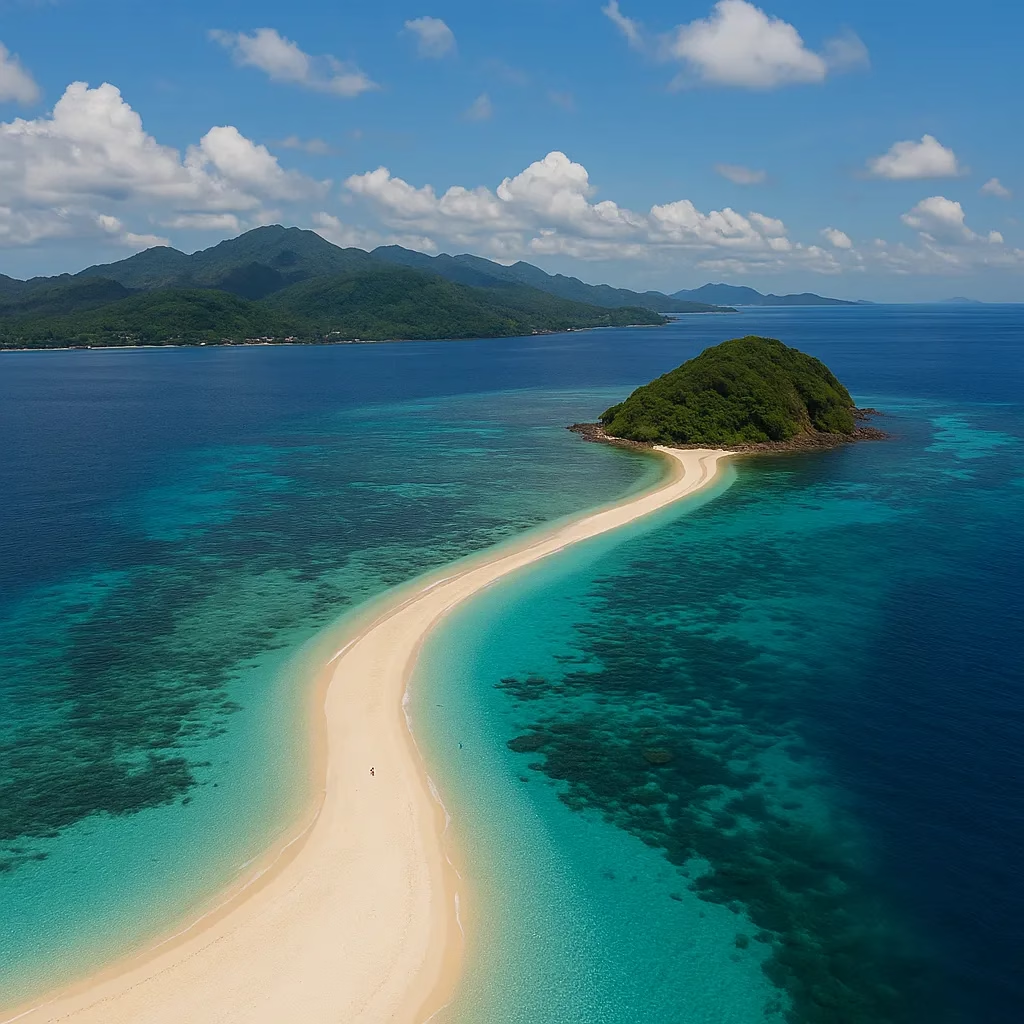
Leyte is the casual best friend you never knew you had, leaving a show-stopping moment of sandbar clarity and a history lesson. So good-looking you might get sued for using the wrong filter: Kalanggaman Island. Add to that the Longest Bridge in the Philippines, San Juanico, and a bonus WWII history lesson at MacArthur Landing Memorial.
Why Go:
- Kalanggaman Island: Beyoncé-level beauty.
- San Juanico Bridge: Longest flex in the country.
- Lake Danao: A guitar- or lute-shaped freshwater getaway.
More to Love: Don’t overlook the dining scene in Leyte. Their binagol (dense sweet taro in a coconut shell) and moron (rice cake, not person) are regional specialties that could convince you on their own to stay an extra week.
Pro Tip: Come during the dry season (Dec–May) for optimal beach vibes.
Siquijor – Witches, Waterfalls, and Wi-Fi
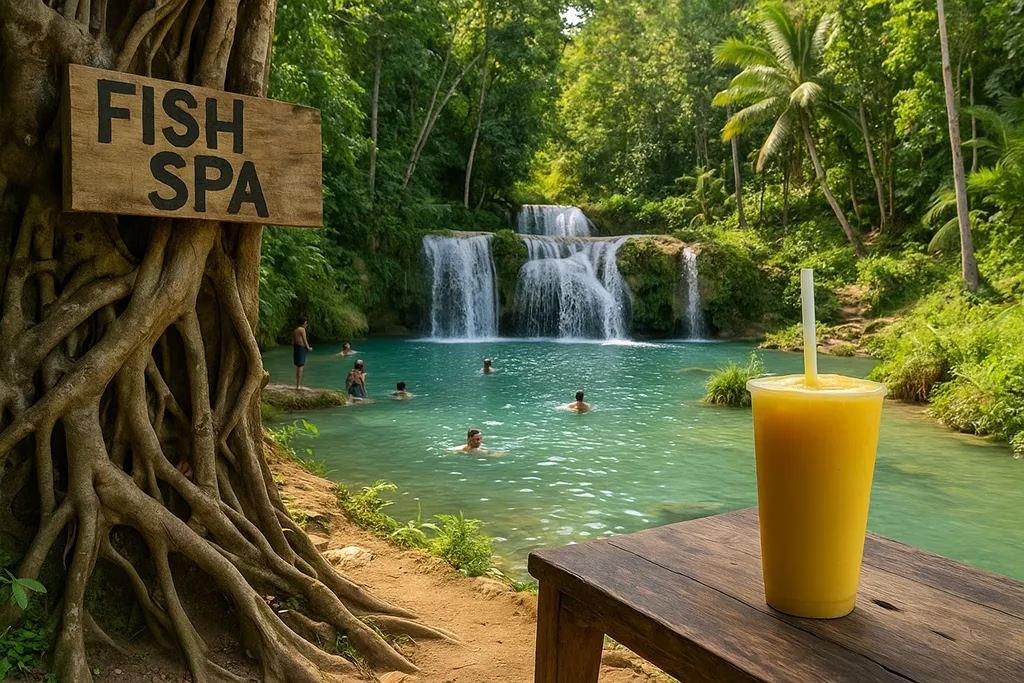
Finding out we’d just arrived in Siquijor – the island of witches was my first step to deciding I didn’t need or want a Google homepage telling me what I should be doing on this enchanted little voodoo-infested rock.
Siquijor has a spooky reputation due to its ancient legends of healers and witches. These days, the only spell you’re liable to fall under is of its turquoise waterfalls, peaceful beaches, and locals offering mango shakes instead of curses.
Why Go:
- Cambugahay Falls is nature’s infinity pool, more or less.
- A century-old balete tree with a natural fish spa at its roots.
- Sunset views that could make you a believer in magic once more.
More to Love: Island hopping here is the stuff dreams are made of. Salagdoong Beach cliff jumps and Paliton’s golden hour sunsets will have you hitting that blissful combination of adrenaline plus zen. It’s essentially Bali, except with fewer yogis and more intrigue.
Pro Tip: Don’t make jokes about curses—locals still revere the island’s magical practices.
Batanes – The Instagram Filter You Don’t Have to Use
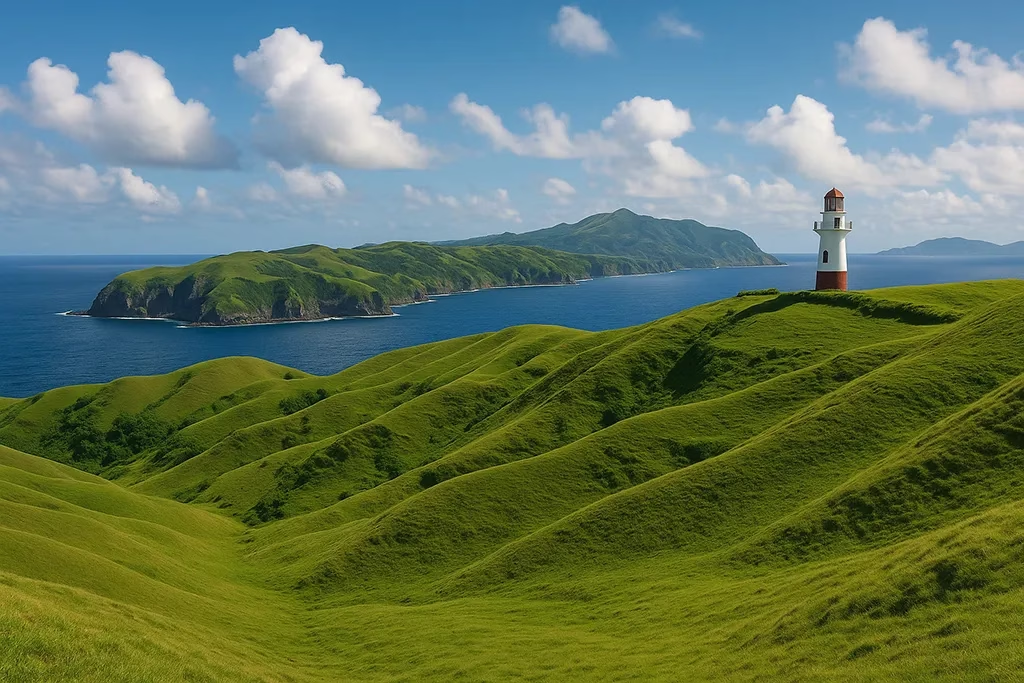
When Mother Nature hires a stylist, it becomes Batanes. Think rolling green hills, stone houses, and towering cliffs where the Pacific meets the South China Sea. It looks like Ireland — except without sheep, and with better weather.
Why Go:
- Marlboro Hills (no smoking, just incredible vistas).
- Ivatan stone houses that also function as natural air conditioning.
- Postcard-perfect lighthouses.
More to Love: The Ivatans are some of the nicest locals you’ll encounter, and the food is delightfully modest, hearty fare. For a culinary and cultural twist, however, try Uvud balls (banana pith meatballs) or vakul (a headpiece made from palm leaves).
Pro Tip: Flights are weather-dependent. Bring patience (and snacks).
Lake Sebu – Dreams from Threads of T’nalak
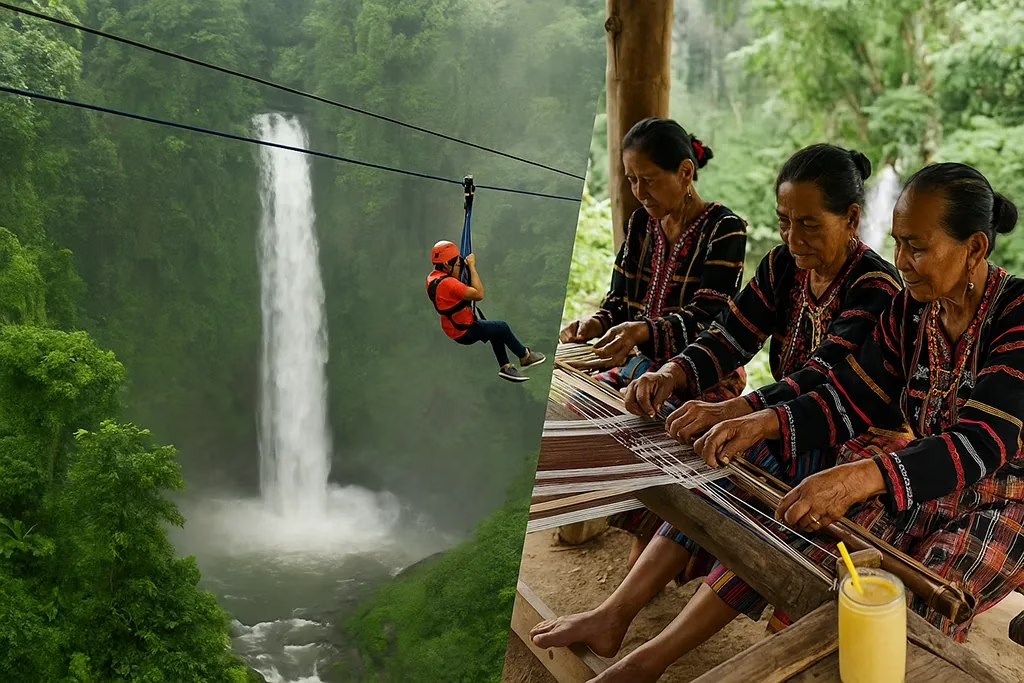
In Lake Sebu, culture and nature walk hand in hand. This highland lake in South Cotabato is home to the T’boli dream weavers, who weave images into sacred T’nalak textiles. Throw in seven waterfalls and a zipline that soars above them, and you’ll understand you’ve accidentally stumbled into paradise on the down low.
Why Go:
- See the T’boli weave their sacred fabric, T’nalak, from abaca fibers.
- Cross waterfalls by zipline for thrills plus views.
- The morning mist on the lake seems like a set for a fantasy movie.
More to Love: Lake Sebu is a foodie’s haven, too. The tilapia here is done every which way — grilled, fried, stewed, or even packed into spring rolls. Who would have guessed a freshwater lake fish could be so versatile (or addictive)?
Pro Tip: Don’t ask how I know that, or you’ll have to buy textiles directly from T’boli weavers, which supports the community and ensures authenticity.
Fort Santiago – History Bound to Spirit Activity
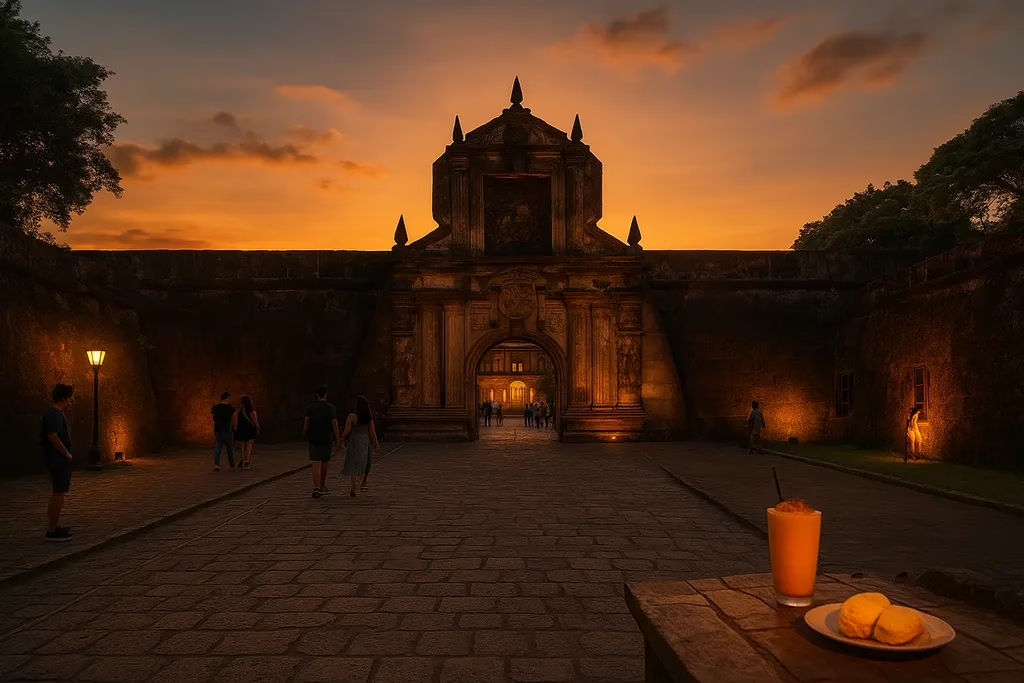
Fort Santiago isn’t underrated because it’s unknown; it’s underrated because everyone treats it like a pitstop. This 16th-century citadel in Manila’s Intramuros once served as a military defense, a prison, and the last living quarters of national hero Jose Rizal.
Why Go:
- Wander through dungeons that echo with ghost stories.
- Inside the Rizal Shrine is the country’s most influential story, one that has shaped and driven its destiny.
- Sunset over the Pasig River is cinematic.
More to Love: Outside the walls, Intramuros doesn’t have anything on Manila — at least when it comes to showing you a really good time. It’s a reminder that Manila is about more than traffic — it’s history with a side of dessert.
Pro Tip: Go at dusk for the most creepy-but-romantic vibes.
Samal Island of Davao – The Secret Beach of Davao

Samal is like Davao’s underdog beach baby. It’s unforgettable, with shades-of-white sand shores, giant clams, and the Monfort Bat Sanctuary (millions of bats — instant Halloween idea). And you’re just a quick hop away from Davao City.
Why Go:
- Hagimit Falls is an exploration jungle gem you cannot miss.
- Pearl Farm Beach Resort for luxury that’s not crowded.
- The bat cave — because 2.5 million bats can’t be mistaken.
More to Love: Snorkeling is a delight here with vibrant reefs and abundant marine life in shallow water, only meters from the shoreline. If you’re a diver, Samal offers up coral gardens so neon they put your screensaver to shame.
Pro Tip: Pack it in with Davao’s durian (aka SMELLY — but aren’t you daring).
Cuyo Islands – Palawan’s Neglected Cousin.

Sandwiched between Palawan and Panay, the Cuyo Islands are the Jan Brady of Philippine tourism — overlooked but surprisingly calm. Windsurfers and kite surfers have long kept the secret, but for most visitors it’s still delightfully off the grid.
Why Go:
- Endless white-sand beaches, zero crowds.
- Great winds for kitesurfing.
- Friendly town life where everyone knows everybody.
More to Love: There’s a fascinating mix of form and culture at play here, as Spanish colonial sensibilities meet local tradition. The annual Cuyo Fiesta is a lively affair, full of music and great dancing in the open air with the locals beneath the stars.
Pro Tip: Don’t look for luxury resorts — think rustic island charm.
Masbate – Rodeos, Ranching, and a Wild Coastline

Masbate is proof that the Philippines has more to offer than just beaches. Here, cowboys exist. Rodeos happen. And the coast is gloriously untamed, begging for adventurers who find culture and coastline irresistible together.
Why Go:
- Masbate Rodeo Festival: lassos, boots, and bulls in the tropics.
- And the diving? Ticao Island is famous for its manta rays.
- The beaches of Burias Island seem undisturbed.
More to Love: The diving off the coast is truly epic. It’s also the site of massive manta rays and, if you’re lucky, hammerhead sharks. This isn’t just Masbate—it’s Mas-epic.
Pro Tip: Consider visiting in April for the rodeo. Pack boots and flip-flops.
Budget & Costs
- Sleeping: Budget guesthouses $15 15USD/night, mid-range hotels $40-$70 USD, and Resorts (if you find one) $100+ USD.
- Transportation: Domestic flights cost approximately $50–$100 USD round-trip. Ferries between islands $5–$20 USD.
- Food: Street meals $2–$3 USD, sit-down dinners $5–$10 USD, seafood spreads $20+ USD (it’s worth it).
- Activities: Entrance fees often $1–$5 USD. Tour/island-hopping packages are $20 to $50 USD.
What does this look like in real life?
If you’re a budget backpacker, it’s possible to travel around the Philippines for less than your Netflix subscription plus your daily coffee habit. For around $30 to $40 a day, you can rent a decent room, feed yourself well, and still have enough left over for activities like jumping off waterfalls or snorkeling with turtles. Midrange travelers — people who enjoy air-con and Wi-Fi that doesn’t make you weep into your Kindle at night — can live like kings for less than $100 a day. If you’re in a resort state of mind, you can still find luxury here without having to part with a kidney. Bottom line: the Philippines has champagne views at beer prices, which means that whether you live as a cheapskate or a high roller, you will get more thrills for your dollar than pretty much anywhere else in Southeast Asia.
Top Travel Mistakes to Avoid
- Mistake 1: Visiting too many islands at once.
You’ll spend more time hugging ferry benches than hammocks. Pick a few and enjoy them properly. - Mistake 2: Underestimating the sun.
Filipino sunshine is like an overenthusiastic aunt—it will smother you whether you like it or not. Sunscreen is non-negotiable. - Mistake 3: Forgetting cash.
Not every island has an ATM, and your credit card won’t work at a beach shack selling fresh coconuts. Bring cash—preferably in small bills. - Mistake 4: Skipping local food for burgers.
Sure, there’s comfort in fries, but why skip kinilaw (Filipino ceviche) or fresh mango shakes? Travel with your taste buds, not just your wallet. - Mistake 5: Expecting city-level Wi-Fi everywhere.
You’re on an island, not Silicon Valley. Embrace digital detox—it’s cheaper than therapy.
Key Takeaways
The Philippines is not just Boracay or Palawan. From volcano-studded Camiguin to rodeo-loving Masbate, these underrated destinations remind us that paradise comes in many guises. Each provides fewer crowds, more charm, and stories your friends have not yet heard.
So, pack your bags — but maybe don’t share it all. Some secrets are best whispered.
FAQs
1: Are these destinations safe?
Maybe, but be sure to check travel advisories before you fly. Stick with locals for guidance.
2: When is the best time to go?
The dry season (Dec–May) is ideal for beaches. Rainy season (Jun–Nov) is lush and less expensive, but be sure to pack rain gear.
3: Can I see them all in one trip?
Not unless you’re on sabbatical. Choose two or three trips and enjoy as intended.
4: Must I speak Filipino to get around?
Nope! You will be well understood, and hand gestures and a smile work wonders. But learning a few local words like salamat (thank you), carrying those mangoes back will earn you bonus points — and possibly an additional slice.
5: Is Wi-Fi dependable in these under-appreciated spots?
Let’s say that it’s not always TikTok-ready. Some places have good Wi-Fi, others are more “check your email once a day and call it a win.” Pro tip: download your Netflix shows before heading onto a ferry.
6: What do I have to bring with me?
Beyond essentials like swimwear, sunscreen, and flip-flops, you’ll want to pack a power bank, a light raincoat, and a sense of humor. You won’t leave home without all three when a tropical downpour hits you halfway through that sunset selfie.
Other Articles that may be of Interest
You may also find the following articles interesting.
- The Best of Siquijor: Beaches, Waterfalls, Healers, and Hidden Wonders
- The Hidden Philippines Bucket List: Wild, Weird, and Wonderfully Untouched
Suggestions For Lodging and Travel
Lodging is widely available throughout the Philippines. However, you may want to consider getting assistance booking tours to some of the Philippines’ attractions. I’ve provided a few local agencies that we’ve found to be very good for setting up tours. For transparency, we may earn a commission when you click on certain links in this article, but this doesn’t influence our editorial standards. We only recommend services that we genuinely believe will enhance your travel experiences. This will not cost you anything, and I can continue to support this site through these links.
Local Lodging Assistance
- Guide to the Philippines: This site specializes in tours throughout the Philippines, offering flexibility in scheduling and competitive pricing. I highly recommend them for booking local arrangements for a trip like this one. You can book flights and hotels through the Expedia link provided below.
- Hotel Accommodations: I highly recommend The Manila Hotel for a stay in Manila. I stay here every time I travel to the Philippines. It is centrally located, and many attractions are easily accessible from there. Intramuros and Rizal Park are within walking distance. I have provided a search box below for you to use to search for hotels (click on “Stays” at the top) or flights (click on “Flights” at the top). This tool will provide me with an affiliate commission (at no additional cost to you).
- Kapwa Travel is a travel company focused on the Philippines. It specializes in customizing trips to meet customers’ needs.
- Tourismo Filipino is a well-established company that has been operating for over 40 years. It specializes in tailoring tours to meet customers’ needs.
- Tropical Experience Travel Services – Tours of the Philippines: This company offers a range of tour packages, allowing you to tailor your trip to your preferences.
Lastly, we recommend booking international travel flights through established organizations rather than a local travel agent in the Philippines. I recommend Expedia.com (see the box below), the site I use to book my international travel. I have provided a search box below for you to use to search for flights (click on “Flights” at the top) or Hotels (click on “Stays” at the top). This tool will provide me with an affiliate commission (at no cost to you).